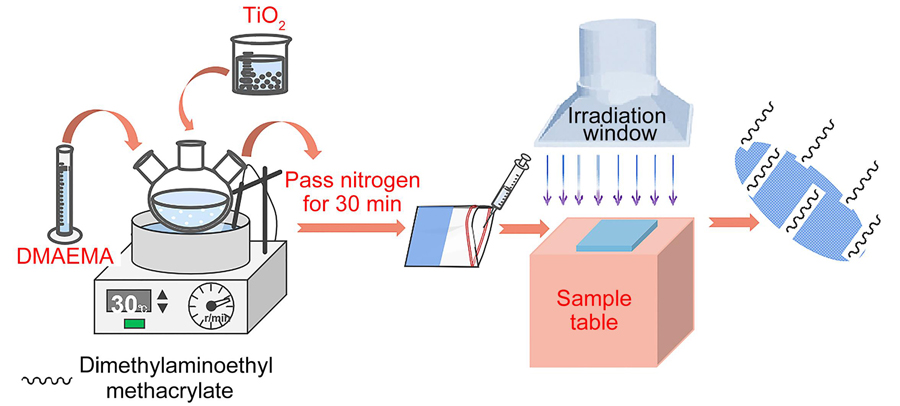[1] H Shin, J Yu, L Wang et al. Spectral interference of heavy metal contamination on spectral signals of mois-ture content for heavy metal contaminated soils. IEEE Transactions on Geoscience and Remote Sensing, 58, 2266-2275(2020).
[2] S Khalid, M Shahid, N K Niazi et al. A comparison of technologies for remediation of heavy metal contaminated soils. Journal of Geochemical Exploration, 182, 247-268(2017).
[3] X F Tang, Y Wu, L B Han et al. Characteristics of heavy metal migration in farmland. Environmental Earth Sciences, 81, 338(2022).
[4] L X Zhang, G Y Zhu, X Ge et al. Novel insights into heavy metal pollution of farmland based on reactive heavy metals (RHMs): pollution characteristics, predictive models, and quantitative source apportionment. Journal of Hazardous Materials, 360, 32-42(2018).
[5] Zizhang GUO. Preparation of nitrogen-rich activated carbon derived from wetland plant and removal of heavy metals from aqueous solutions(2018).
[6] S P Xia, Z L Song, P Jeyakumar et al. A critical review on bioremediation technologies for Cr(VI)-contaminated soils and wastewater. Critical Reviews in Environmental Science and Technology, 49, 1027-1078(2019).
[7] M Nur-E-Alam, M A S Mia, F Ahmad et al. An overview of chromium removal techniques from tannery effluent. Applied Water Science, 10, 205(2020).
[8] A Bashir, L A Malik, S Ahad et al. Removal of heavy metal ions from aqueous system by ion-exchange and biosorption methods. Environmental Chemistry Letters, 17, 729-754(2019).
[9] P P Sun, M S Lee. Separation of Pt from hydrochloric acid leaching solution of spent catalysts by solvent extr-action and ion exchange. Hydrometallurgy, 110, 91-98(2011).
[10] L A Malik, A Bashir, A Qureashi et al. Detection and removal of heavy metal ions: a review. Environmental Chemistry Letters, 17, 1495-1521(2019).
[11] C J Sun, L P Zhao, R Wang. Recent advances in heterostructured photocatalysts for degradation of organic pollutants. Mini-Reviews in Organic Chemistry, 18, 649-669(2021).
[12] M C Wen, G Y Li, H L Liu et al. Metal-organic framework-based nanomaterials for adsorption and photocatalytic degradation of gaseous pollutants: recent progress and challenges. Environmental Science: Nano, 6, 1006-1025(2019).
[13] A Shoneye, J Sen Chang, M N Chong et al. Recent progress in photocatalytic degradation of chlorinated phenols and reduction of heavy metal ions in water by TiO2-based catalysts. International Materials Reviews, 67, 47-64(2022).
[14] M Ismael. Latest progress on the key operating parameters affecting the photocatalytic activity of TiO2-based photocatalysts for hydrogen fuel production: a comprehensive review. Fuel, 303, 121207(2021).
[15] H M Yadav, J S Kim, S H Pawar. Developments in photocatalytic antibacterial activity of nano TiO2: a review. Korean Journal of Chemical Engineering, 33, 1989-1998(2016).
[16] B A Marinho, S M A G U de Souza, A A U de Souza et al. Electrospun TiO2 nanofibers for water and wastewater treatment: a review. Journal of Materials Science, 56, 5428-5448(2021).
[17] Xiaojun DING, Ming YU, Ziqiang WANG et al. “Green”dyeing of cotton fabric by radiation-initiated immobilizing nanoparticles. Journal of Radiation Research and Radiation Processing, 38, 011001(2020).
[18] Lifan YU, Zepeng LIU, Ziqiang WANG et al. Radiation grafting of cotton fabric for “green” dyeing with acid dyes. Journal of Radiation Research and Radiation Processing, 40, 23-29(2022).
[19] Y S Li, T T Li, X F Song et al. Enhanced adsorption-photocatalytic reduction removal for Cr(VI) based on functionalized TiO2 with hydrophilic monomers by pre-radiation induced grafting-ring opening method. Applied Surface Science, 514, 145789(2020).
[20] Q H Li, M Dong, R Li et al. Enhancement of Cr(VI) removal efficiency via adsorption/photocatalysis synergy using electrospun chitosan/g-C3N4/TiO2 nanofibers. Carbohydrate Polymers, 253, 117200(2021).
[21] W Ji, X B Wang, T Q Ding et al. Electrospinning preparation of nylon-6@UiO-66-NH2 fiber membrane for selective adsorption enhanced photocatalysis reduction of Cr(VI) in water. Chemical Engineering Journal, 451, 138973(2022).




